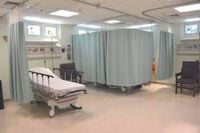Since late August 2025, Puerto Rico has found itself at the crossroads of two major developments—one military, one medical—each highlighting the island’s pivotal role in regional security and public health. While U.S. Marines and Sailors conduct joint exercises in the south to counter criminal networks, a new partnership between Castañer General Hospital and EDP University aims to address a dire nursing shortage in the mountainous interior. Both initiatives, though different in nature, underscore Puerto Rico’s importance as both a strategic stronghold and a community in need of resilient health infrastructure.
On August 31, 2025, the U.S. Marine Corps kicked off extensive military drills in southern Puerto Rico, focusing on enhancing regional security and disrupting the operations of criminal organizations exploiting Caribbean maritime routes. According to the U.S. Marine Corps, these exercises involve the 22nd Marine Expeditionary Unit (MEU) in close coordination with the Puerto Rican National Guard. Their mission? To bolster U.S. strategies for safety in a region increasingly threatened by transnational criminal activity.
The drills are based around Camp Santiago, utilizing Puerto Rico’s varied terrain and tropical climate to replicate the real-world conditions found in drug-trafficking corridors and littoral zones across Latin America. The exercises are not just routine—they are critical training grounds for amphibious and aviation operations. The 22nd MEU, known for its mobility and versatility, integrates command, infantry, logistics, and aviation elements, enabling it to execute missions ranging from amphibious assaults to non-combatant evacuations without relying on land-based infrastructure.
Support comes from the USS Iwo Jima (LHD 7), a Wasp-class amphibious assault ship at the helm of the Iwo Jima Amphibious Ready Group. This group forms a fully integrated force capable of rapid response, power projection, and crisis management—capabilities seen as essential in combating the sophisticated tactics of transnational criminal organizations.
Marine helicopters, including the AH-1Y Cobra and UH-1Y Huey from Marine Medium Tiltrotor Squadron 263 (Reinforced), have been flying missions over Puerto Rico. Their roles span close air support, troop transport, and aerial reconnaissance, with operations featuring vertical envelopment and deep inland insertions aimed at disrupting cartel logistics and blocking maritime access routes. The U.S. Department of War has emphasized that these activities are conducted in close partnership with local authorities, emergency services, and defense leadership, all to ensure minimal disruption to civilian life despite the increased military presence.
Puerto Rico’s status as a U.S. territory makes it a linchpin for rapid military response in the Caribbean. Its geographic diversity and climate offer an ideal training ground, enhancing operational readiness for crisis response and littoral maneuvers. The deployment also includes joint training with the Puerto Rican National Guard, designed to boost local preparedness, interoperability, and disaster response capabilities—a nod to the importance of building regional partnerships and strengthening local institutions.
Meanwhile, as military helicopters buzz overhead and naval vessels patrol the coastline, a quieter but equally vital partnership was announced inland. On September 25, 2025, Castañer General Hospital in Lares, the only hospital and Federally Qualified Health Center (Center 330) in Puerto Rico, signed a two-year clinical training agreement with EDP University. The goal: to provide structured clinical nursing internships and tackle a severe shortage of healthcare professionals in Puerto Rico’s mountainous interior.
Under the agreement, EDP University will send nursing students to complete their clinical rotations at Castañer, providing stipends that cover housing, meals, and conference facilities. In return, Castañer’s clinical and administrative staff will participate in annual continuing education programs for up to 20 health center professionals. The program is expected to see more than 200 nursing students each year, rotating through hospital departments and outpatient clinics to gain hands-on experience and develop essential nursing skills.
“This partnership arose from our desire to tackle the nursing staff shortage that impacts healthcare delivery across Puerto Rico, particularly in rural areas,” said Giovanni Ortiz, CEO of Castañer General Hospital, as reported by The San Juan Daily Star. “By training students in community health centers, we aim to strengthen health services for residents, farmworkers, and other populations in the mountainous region.”
For EDP University, the partnership is both an honor and a strategic step forward. “Signing this agreement with Castañer General Hospital is an honor and a significant step forward,” said EDP President Gladys Nieves. She emphasized that the collaboration reaffirms the university’s commitment to high-quality clinical experiences, connecting nursing students with healthcare institutions known for their service excellence. The San Sebastián campus of EDP has become an academic destination for Hispanic residents of the United States, and this partnership allows students to benefit from both education and the primary medical services so needed by the community.
Puerto Rico’s nursing shortage is acute. The recent Puerto Rico Healthcare Workforce 2025 study, commissioned by the Financial Oversight and Management Board, found that 92% of nurses report experiencing burnout—rates higher than those on the mainland. The shortage has led to heavier workloads, greater administrative burdens, and less time for patient care, all of which exacerbate the crisis. The study warns that this shortfall is straining the healthcare system, resulting in longer wait times and reduced access to care, especially for rural residents and farmworkers who rely on facilities like Castañer General Hospital.
Each clinical group under the new internship program will consist of 10 students, rotating through various areas of the hospital and its affiliated clinics. The hope is that by immersing students in community health centers, the pipeline of trained professionals willing to serve in rural Puerto Rico will grow, helping to alleviate the staffing crisis that has plagued the region for years.
As the 22nd MEU continues its operations in the Caribbean Sea aboard the USS Iwo Jima, its presence serves as a reminder of the broader U.S. commitment to regional security—protecting American interests, maintaining freedom of navigation, and disrupting criminal activities that threaten the stability of the region. At the same time, the new partnership between Castañer General Hospital and EDP University represents a community-driven approach to another kind of security: ensuring that every Puerto Rican, no matter how remote their home, has access to quality healthcare.
These parallel efforts—one focused on military readiness and deterrence, the other on nurturing the next generation of healthcare professionals—demonstrate Puerto Rico’s dual role as both a strategic outpost and a community striving for resilience. As both stories continue to unfold, they offer a snapshot of an island at the heart of the Caribbean, meeting the challenges of the present while preparing for the uncertainties of tomorrow.




